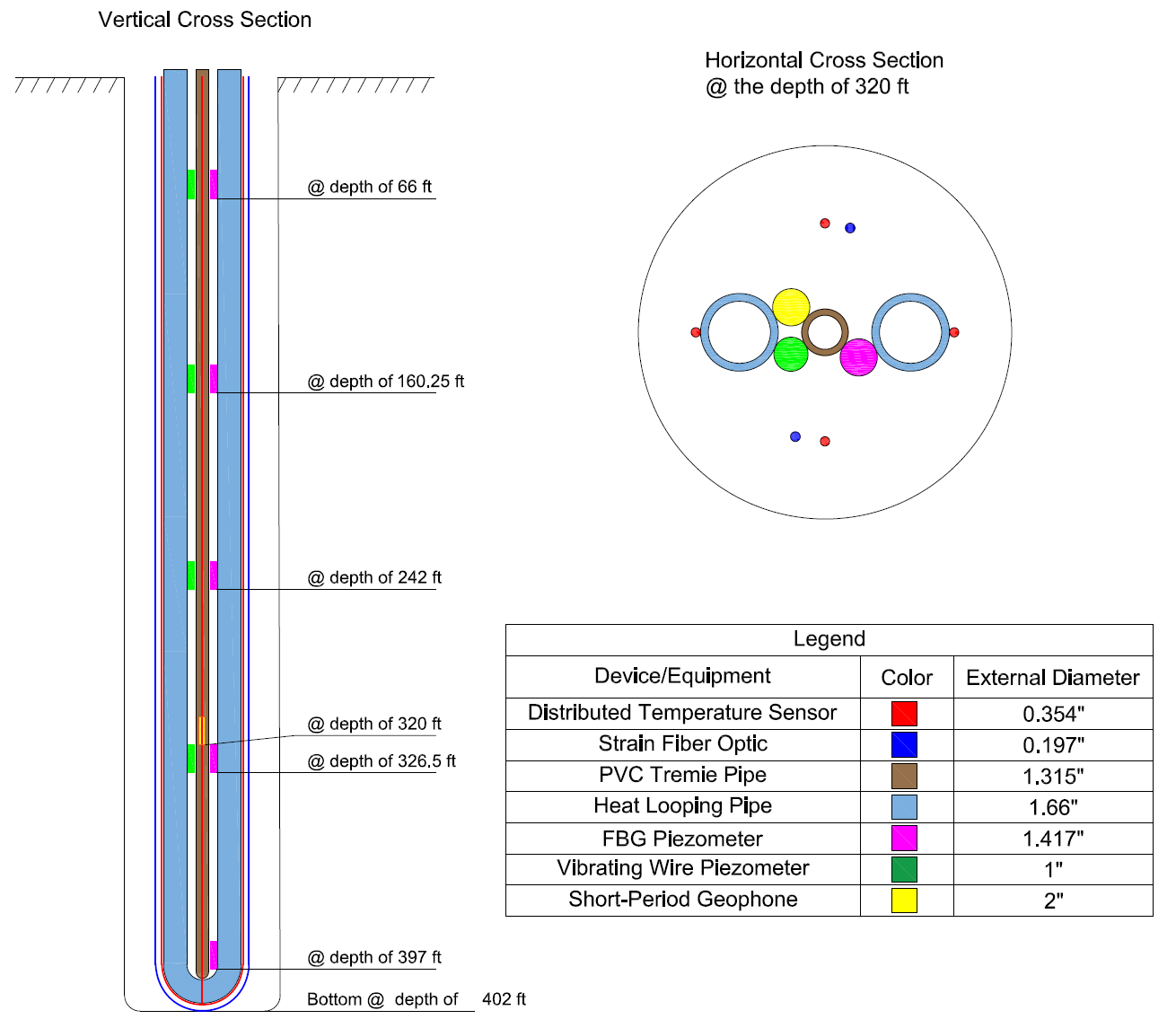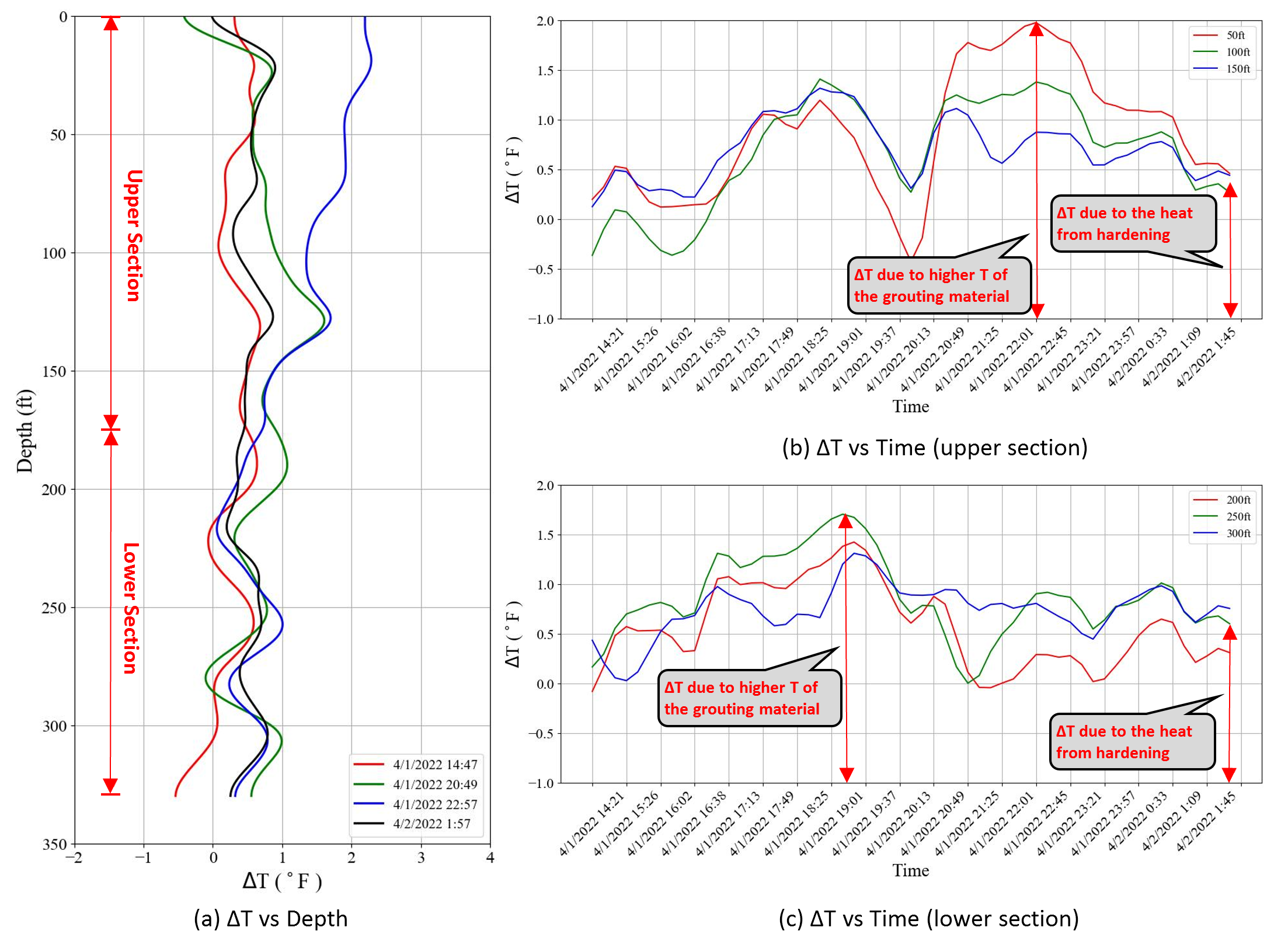Instrument Plan
The 400-ft monitoring borehole was drilled for measuring the geothermal properties and other research purposes. After the geophysical logging, the geothermal heat looping pipe (U-pipe) with instruments attached was installed and grouted inside the borehole. Sensors installed inside the borehole include Distributed Temperature Sensor (DTS), Strain Fiber Optic Sensor, FBG Piezometer, Vibrating Wire Piezometer, and Short-Period Geophone. Figure 1 provides a brief configuration of the borehole, and Figure 2 shows in-situ installation of sensors.
Figure 1 Configuration of the deep borehole
Figure 2 Installation of the heating pipe and instruments
Temperature Monitoring
The ground temperature was measured from April 22 to June 2, and the geothermal gradient is calculated as 0.0136 ℉/ft (24.79 ℃/km), which is similar to the normal range of the geothermal gradient (0.0137 – 0.0165 ℉/ft or 25 – 30 ℃/km).
Figure 3 The Ground Temperature Profiles
The temperature variation along the borehole during grouting was measured using distributed fiber optic temperature sensor (DFOS) and is shown in Figure 4. Distributed fiber optic temperature sensors work well on recording the temperature variation during the construction process and revealing valuable patterns. For example, a large temperature drop can be found in all curves of ΔT versus time at roughly 8 pm, and this is caused by restart of grouting, which was interrupted at 2 pm.
Figure 4 Change of temperature During the Grouting Process



